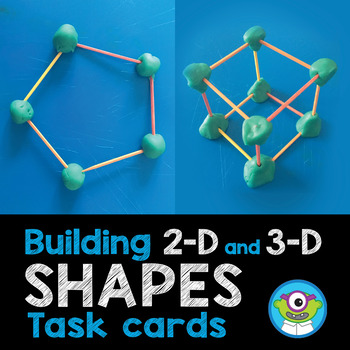2-D and 3-D Shapes STEM Task Cards
- PDF
- Easel Activity
What educators are saying
Description
These Common Core Math Task Cards are very low prep! The only supplies needed are the task cards, toothpicks and playdough!
Task cards are perfect for early finishers and math stations. Use them in small groups, individually or with the entire class.
This Resource Includes:
• Twelve 2-D Shapes Task Cards
• 2-D Shapes Worksheet
• Eight 3-D Shapes Task Cards
• 3-D Shapes Worksheet.
This Resource Covers:
CCSS.MATH.CONTENT.K.G.A.2
CCSS.MATH.CONTENT.K.G.B.4
CCSS.MATH.CONTENT.K.G.B.5
CCSS.MATH.CONTENT.K.G.B.6
CCSS.MATH.CONTENT.1.G.A.2
This Resource Partially Covers:
CCSS.MATH.CONTENT.2.G.A.1
CCSS.MATH.CONTENT.1.G.A.3
CCSS.MATH.CONTENT.1.G.A.1
_____________________________________________________
Please feel free to email me at any time with any questions regarding
this resource!
Josh
ScienceDemoGuy@gmail.com






